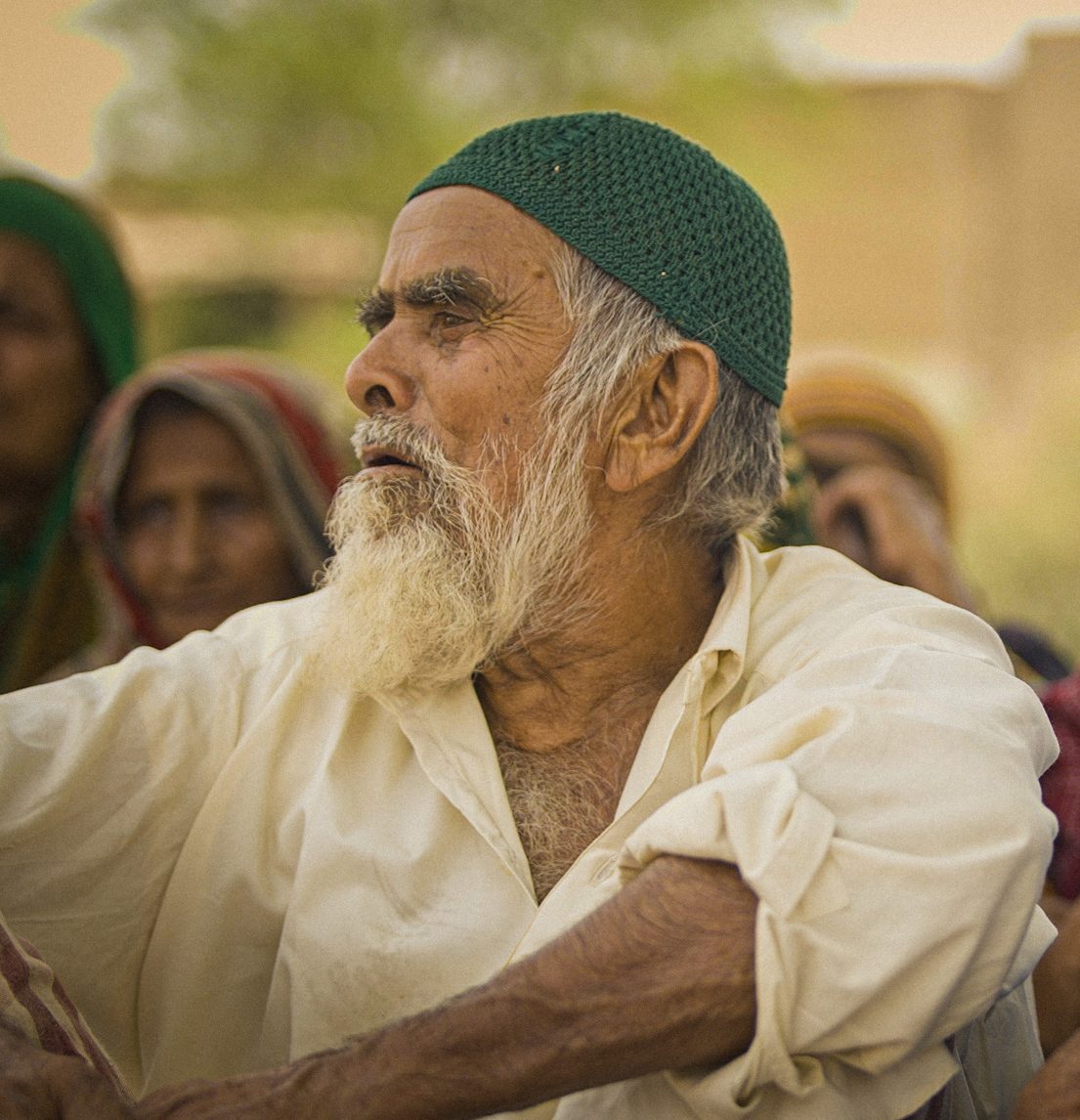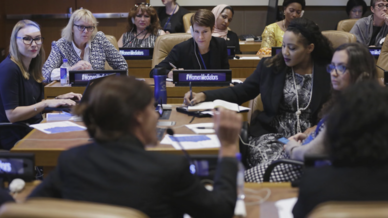Report on Pakistan Supreme Court Ruling and its Alignment with Sustainable Development Goals
1.0 Executive Summary
A landmark judgment by the Supreme Court of Pakistan has significantly advanced women’s rights by reinforcing the unconditional right to dissolve a marriage through ‘Khula’ and formally recognizing psychological abuse as valid grounds for divorce. This ruling represents a critical step towards achieving several United Nations Sustainable Development Goals (SDGs), most notably SDG 5 (Gender Equality), SDG 16 (Peace, Justice and Strong Institutions), and SDG 3 (Good Health and Well-being).
2.0 Key Judicial Findings
The two-member bench, in a judgment authored by Justice Ayesha A Malik, overturned a Peshawar High Court decision and reinstated a family court’s decree of dissolution. The core findings of the ruling are as follows:
- Unconditional Right to ‘Khula’: The court affirmed that ‘Khula’, a woman’s right to seek divorce under Islamic law, is an independent right and cannot be made conditional upon the husband’s consent or judicial discretion.
- Recognition of Psychological Cruelty: The judgment establishes that cruelty is not limited to physical violence. Psychological abuse, including humiliation, neglect, intimidation, and emotional abuse, is now recognized as a legitimate basis for dissolving a marriage.
- Constitutional Foundation: The ruling was anchored in Articles 14, 25, and 35 of Pakistan’s Constitution, which guarantee the right to dignity, equality before the law, and the protection of the family.
- Rejection of Patriarchal Interpretations: The Supreme Court criticized lower court interpretations that limited women’s agency and autonomy, setting a new precedent for family law cases.
3.0 Alignment with SDG 5: Gender Equality
The ruling is a direct contribution to the advancement of SDG 5, which aims to achieve gender equality and empower all women and girls. Its impact is evident in several key areas:
- Target 5.1 (End Discrimination): By removing the husband’s consent as a barrier to ‘Khula’, the ruling dismantles a discriminatory legal practice and promotes equality within the institution of marriage.
- Target 5.2 (Eliminate Violence): The formal recognition of psychological cruelty as a form of abuse expands the legal framework for protecting women from all forms of violence, both physical and mental.
- Empowerment and Agency: The decision empowers women by affirming their autonomy and right to withdraw from harmful and untenable marriages, reinforcing their dignity and freedom.
4.0 Contribution to SDG 16: Peace, Justice and Strong Institutions
This judicial precedent strengthens the legal framework in Pakistan, aligning it with the principles of SDG 16.
- Target 16.3 (Promote Rule of Law and Equal Access to Justice): The ruling ensures that women have effective and equal access to justice in family court matters, reinforcing the principle that the law must be applied equitably.
- Target 16.B (Promote Non-discriminatory Laws): The judgment actively promotes and enforces a non-discriminatory interpretation of family law, setting a standard for lower courts to follow and ensuring that legal institutions protect the rights of all citizens.
5.0 Broader Implications for Sustainable Development
The ruling also has significant implications for other SDGs:
- SDG 3 (Good Health and Well-being): By acknowledging that mental cruelty can be as damaging as physical abuse, the court prioritizes the emotional and psychological well-being of women, a key component of overall health.
- SDG 10 (Reduced Inequalities): The decision directly addresses and reduces a key gender-based inequality within a fundamental social institution, contributing to a more just and equitable society.
6.0 Conclusion
The Supreme Court’s ruling is a monumental step for women’s rights in Pakistan. It not only clarifies and strengthens the legal avenues for women seeking divorce but also aligns the country’s judicial system more closely with its international commitments to the Sustainable Development Goals. By championing gender equality, ensuring access to justice, and protecting the well-being of women, this judgment sets a critical precedent for a more equitable future.
Analysis of Sustainable Development Goals (SDGs) in the Article
1. Which SDGs are addressed or connected to the issues highlighted in the article?
-
SDG 5: Gender Equality
This goal is central to the article, which focuses on a landmark ruling reinforcing a woman’s right to dissolve a marriage (‘Khula’) in Pakistan. The ruling directly addresses issues of women’s autonomy, agency, and protection from psychological abuse within marriage, challenging patriarchal interpretations of law and promoting equality between men and women in marital matters.
-
SDG 16: Peace, Justice and Strong Institutions
The article highlights the role of the judiciary (Pakistan’s Supreme Court) in upholding justice and the rule of law. By overturning a lower court’s decision and clarifying the law on ‘Khula’, the court is strengthening legal institutions and ensuring equal access to justice for women. The ruling is based on constitutional guarantees of dignity and equality, reinforcing the importance of strong, non-discriminatory institutions.
2. What specific targets under those SDGs can be identified based on the article’s content?
-
SDG 5: Gender Equality
-
Target 5.1: End all forms of discrimination against all women and girls everywhere.
The article discusses how the Supreme Court’s ruling challenges the “patriarchal interpretation used by the lower courts, which limited women’s agency and autonomy.” By affirming that a woman’s right to ‘Khula’ is independent of her husband’s consent, the court is actively working to end a discriminatory legal practice that placed women at a disadvantage in marriage dissolution.
-
Target 5.2: Eliminate all forms of violence against all women and girls in the public and private spheres.
The ruling explicitly recognizes “psychological abuse — including humiliation, neglect, intimidation, and emotional abuse — as valid grounds for seeking a divorce.” It states that “mental cruelty can be as damaging as physical abuse.” This directly addresses the elimination of non-physical forms of violence against women within the private sphere of marriage.
-
Target 5.1: End all forms of discrimination against all women and girls everywhere.
-
SDG 16: Peace, Justice and Strong Institutions
-
Target 16.3: Promote the rule of law at the national and international levels and ensure equal access to justice for all.
The entire article is about a judicial process where the Supreme Court corrected a lower court’s incorrect decision. The ruling reinstated the family court’s decree, thereby ensuring the petitioner received justice. It clarifies the law for future cases, promoting the rule of law and affirming that women have equal access to the justice system to withdraw from harmful marriages.
-
Target 16.B: Promote and enforce non-discriminatory laws and policies for sustainable development.
The Supreme Court’s judgment enforces Pakistan’s constitutional guarantees of “dignity, equality before the law, and protection of the family” (Articles 14, 25, and 35). By applying these constitutional principles to family law and striking down a discriminatory interpretation, the court is actively promoting and enforcing non-discriminatory laws and legal precedents.
-
Target 16.3: Promote the rule of law at the national and international levels and ensure equal access to justice for all.
3. Are there any indicators mentioned or implied in the article that can be used to measure progress towards the identified targets?
- Legal Frameworks on Gender Equality: The article’s core subject is the establishment of a legal precedent. An implied indicator is the existence and enforcement of laws and judicial rulings that guarantee women equal rights in marriage and divorce, specifically recognizing a woman’s unilateral right to initiate divorce (‘Khula’).
- Proportion of Women Protected by Law from Violence: The ruling’s recognition of psychological abuse as a valid ground for divorce implies an indicator related to the legal system’s capacity to protect women from all forms of violence. Progress could be measured by the number of legal frameworks that explicitly include psychological and emotional abuse as forms of cruelty or violence.
- Access to Justice: The article details a successful appeal to the Supreme Court. An implied indicator is the proportion of legal cases related to women’s rights (like ‘Khula’) that are successfully adjudicated in favor of the woman, particularly at the appellate and supreme court levels, demonstrating that the justice system is accessible and effective for women.
4. Table of SDGs, Targets, and Indicators
| SDGs | Targets | Indicators (as identified in the article) |
|---|---|---|
| SDG 5: Gender Equality |
5.1: End all forms of discrimination against all women and girls everywhere.
5.2: Eliminate all forms of violence against all women and girls in the public and private spheres. |
Existence of legal precedents and laws that affirm a woman’s right to dissolve a marriage independently of her husband’s consent.
Legal framework that recognizes psychological and emotional abuse as valid grounds for divorce and a form of violence against women. |
| SDG 16: Peace, Justice and Strong Institutions |
16.3: Promote the rule of law at the national levels and ensure equal access to justice for all.
16.B: Promote and enforce non-discriminatory laws and policies for sustainable development. |
Number of judicial rulings by higher courts that correct lower court decisions and uphold women’s equal access to justice in family law.
Enforcement of constitutional guarantees of equality and dignity in judicial decisions, specifically striking down patriarchal or discriminatory interpretations of law. |
Source: tribuneindia.com






